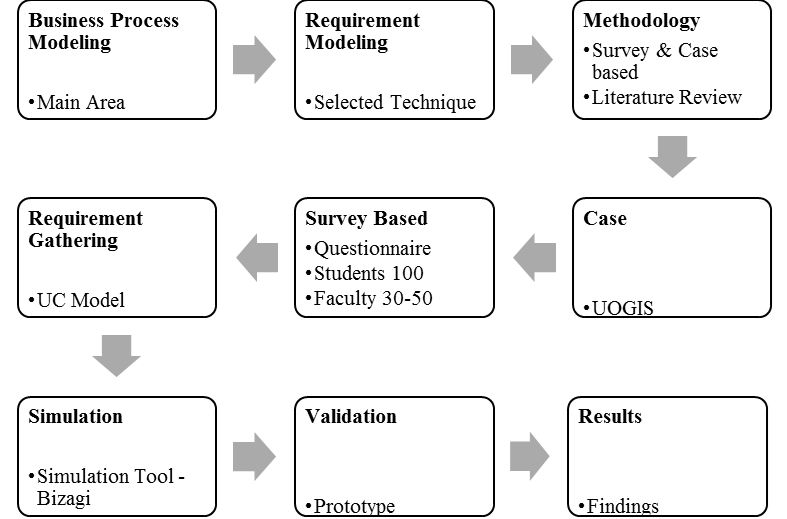Requirement Modeling & Simulation: A Case of UOGIS
Abstract
Software Development Life Cycle (SDLC) gives guidelines to software development process and Requirement Engineering (RE) is the initial step in development which lays base for an efficient and successful software system. The current trend in RE is to identify problems, specify and validate the requirements. Although, RE naturally fills the communication gap between client and developer, the immaturity of both knowledge implementation and human perspectives in RE creates new challenges of decision making in requirements. This paper focused on the need of clearly gathered, specified and modeled requirements that will surely help the developers to obtain and understand stakeholder’s needs by using a suitable requirement technique. In particular, this paper proposed University of Gujrat Information System - UOGIS redesigning using Requirement Modeling and Simulation technique. The methodology revealed best results for current scenario in which developers will get benefits along with SRS document to completely understand user requirements. The proposed work will contribute towards broader scope in redesigning UOGIS and other educational information systems to help developers in understanding requirements through interactive visualized simulations which complies with requirement specifications and user’s needs.

Copyright (c) 2018 University of Sindh, Jamshoro

This work is licensed under a Creative Commons Attribution-NoDerivatives 4.0 International License.
University of Sindh Journal of Information and Communication Technology (USJICT) follows an Open Access Policy under Attribution-NonCommercial CC-BY-NC license. Researchers can copy and redistribute the material in any medium or format, for any purpose. Authors can self-archive publisher's version of the accepted article in digital repositories and archives.
Upon acceptance, the author must transfer the copyright of this manuscript to the Journal for publication on paper, on data storage media and online with distribution rights to USJICT, University of sindh, Jamshoro, Pakistan. Kindly download the copyright for below and attach as a supplimentry file during article submission











